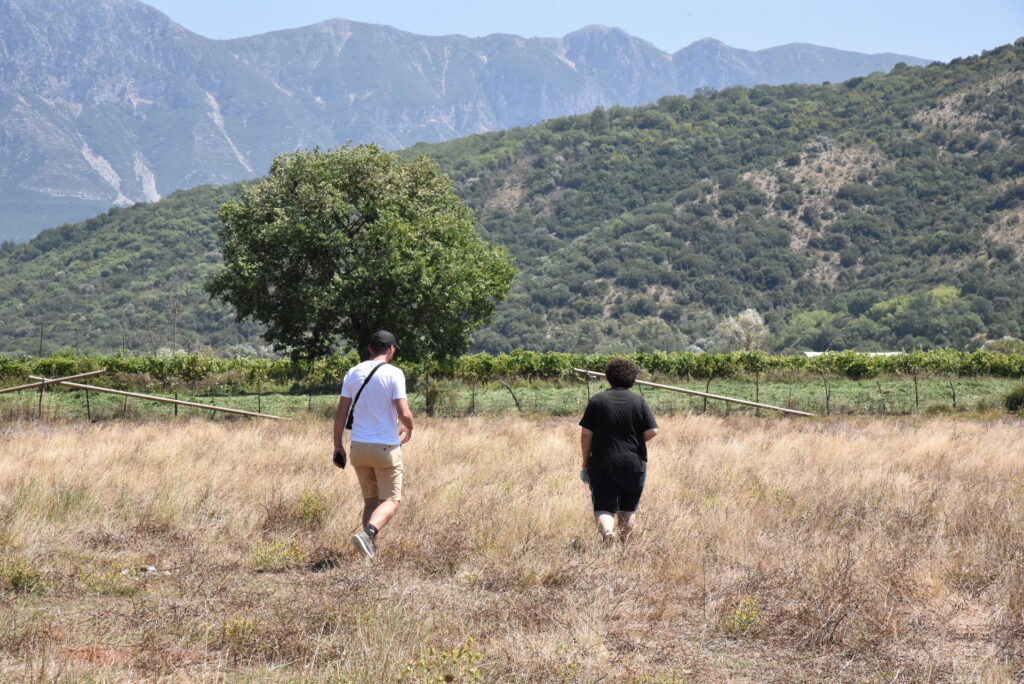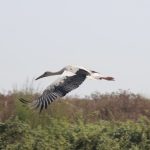On August 5th, Phoenice, the White stork fitted with a GPS transmitter this summer, started its
migration journey. The stork entered the Greek territory but, on August 6th, its transmitter stopped
showing any sign of movement. This meant that the stork was most likely dead.
The AOS team immediately contacted the Natural Environment & Climate Change Agency (NECCA),
Greece, who dispatched their rangers to go investigate the last location registered on the transmitter
(an agricultural plot located between the villages of Karvounari and Sevasto). However, their search was
unsuccessful.
A few days later, the AOS team headed to Greece in hopes of discovering what happened to Phoenice
and to potentially retrieve the transmitter in order to deploy it again the following year. While,
investigating the area where the GPS signal was coming from, the team discovered what remained of
the stork – a few feathers scattered on the ground and the transmitter, intact and functional.
Even thought it was no longer possible to inspect the carcass, the evidences suggest that the most
plausible cause of death is electrocution. The satellite images showed that, for several days, the body
was located next to a utility pole. Later on, the body has been moved by animals several meters from
the pole and subsequently consumed.
Storks are known to roost and even build their nests on top of utility poles and they are a species
susceptible to electrocution and collision. This makes uninsulated utility poles a major hazard to storks.
Hopefully, Phoenice’s story will serve as a cautionary tale and will help raise awareness for the alarming
issue that is the electrocution and collision of birds with overhead powerlines.
Phoenice was tagged with a transmitter during the Waterbird Satellite Tracking Camp in Albania,
organized within the frame of the Birds Without Borders – Phase II project funded by the Western
Balkans Fund and European Union, under the Call for Regional Project Proposals “Support to the
Promotion of Civil Society regional activities in the Western Balkans”.









